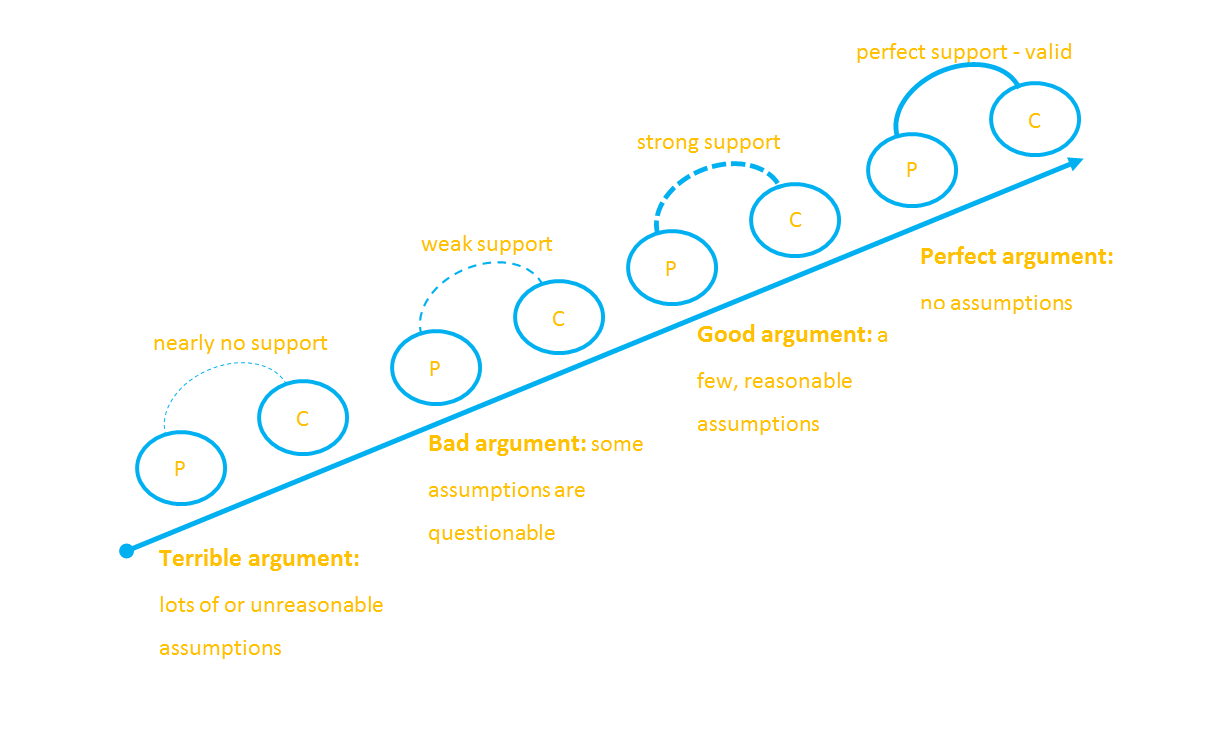What’s the Difference between a Good and a Bad Argument?
[This is a lesson excerpt from our online course, for which we invite you to enroll.]
When we say an argument is "good," what do we really mean? Well, recall that an argument is just premise(s) plus conclusion. Premises supports the conclusion and the conclusion is supported by the premises. So, “good” really just describes how well the premises support the conclusion. In other words, “good” describes the strength of the support relationship between the premises and the conclusion. Just how “good” can the relationship be? Until it becomes perfect, of course. When that happens, it is said that the argument is valid. Turn your attention to the chart below:

That’s about as succinctly as I can explain the distinction between good and bad arguments. Bear in mind that most arguments in real life and on the LSAT do not have a valid relationship. Most arguments simply have a relationship where the premises, to varying degrees of strength, support the conclusion. Good ones make very few and very reasonable assumptions. Hence, their premises strongly support their conclusion. Bad ones make very many and highly uncertain assumptions. Hence, their premises weakly support their conclusion, if at all. The perfect ones make no assumptions and is said to be valid.
Let's review:
An argument is good to the extent to which its premises support its conclusion. The more assumptions an argument makes, the weaker the support the premises give to the conclusion and thus, the weaker the argument.
